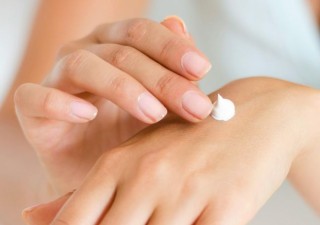Aiming for girl power in India’s patents scene
31 May 2019

India comes in strong at 7th position among 20 countries with the largest share of international patent applications involving female inventors in 2017. This is based on data released by the World Intellectual Property Office in April 2019.
According to the WIPO report, 28.3 percent of international patent filings in India had females listed among the inventors.
South Korea and China are on top of the list with 50.2 percent and 48 percent respectively. Australia and Japan also make it to the rankings at 16th and 17th positions.
Overall, 31 percent of 243,500 international patent applications published by WIPO that year included women among the applicants. The figure for 2007 was at 23 percent.
Nevertheless WIPO maintains that despite the rising number of women patent filers, the gender gap persists and girl power isn’t all fired up.
To help solve this problem, the government of India, through its Department of Industrial Policy and Promotion (DIPP), Ministry of Commerce and Industry, has circulated Draft Rules further amending the Patents Rules, 2003. The Draft Rules were published on December 10, 2018.
Among the amendments is that in Sub-rule (1) of Rule 24 C. This portion focuses on specific instances where applicants may seek expedited examination by the Indian Patent Office prior to the First Examination Report. The amendment adds new categories of applicants who may avail expedited examination. One of these new categories is that of individual female patent applicants or groups where at least one of the applicants is a female.
There are a lot of female entrepreneurs in India. Yet, only a handful apply for patents. The Draft Rules aims to change this.
Gaps and advantages
“The proposed amendment could result in baby steps being taken to resolve larger and more deep-rooted problems, namely encouraging innovation by women and acknowledging and providing adequate attribution to the contribution by women in a professional environment,” says Kruttika Vijay, attorney at Ira Law in New Delhi. “If implemented in the right spirit, its significance for innovation in general across the globe, not just the APAC, could be tremendous.”
However, Vijay is not certain whether the amendments will be successfully practiced.
For one, she says the small number of female patent applicants in the country is a result of the small number of women taking up science courses and entering the field.
Second, women in scientific fields are more likely to work in an established organizational structure rather than as independent entrepreneurs. Thus, even if it were a female employee who made the invention, it is likely that the company where she works will be the patent applicant.
Third, she says the provision is prone to misuse. “Male applicants may choose to include a non-contributing female applicant for the sole purpose of having the examination of their application expedited,” Vijay explains.
For Archana Shanker, senior partner and head of patents and designs at Anand and Anand in Noida, the draft amendment rules is “certainly a welcome move.”
Yet, she believes that diversity is important.
“While such a move is first of its kind in the world possibly, we need to first understand and appreciate the objective behind it,” she says. “If the object is to encourage scientific temper amongst women and also encourage them to file patents, benefits need to extent to filing of the patent applications as well and all other related procedures. Further encouragement of women in the field of research and innovation should not be linked to the said women being the applicant. It should extend to them as being inventors as well to bring in diversity. However the later might have a challenge as the number of cases where women are inventors and not applicants are few as opposed women being inventors or applicants.”
Still, the amendments do offer a lot of advantages, according to Manisha Singh Nair, co-founder and partner at LexOrbis in New Delhi.
Apart from promoting inclusion of women inventors, they also aid in product commercialization. The process includes finding investors, funding and licensing partners, among others. “Even during negotiations process with probable investors, she would have better chance with a granted patent as compared to a pending application,” Nair explains.
The amendments also promote market advantage since “[e]arly allowance of the inventions by women innovators would contribute in advantageous position in competitive market.”
Lastly, an expedited examination and early allowance of the patent application will help in an inventor’s claim for damages when there is infringement. It will also help in raising the number of women entrepreneurs and research-oriented startups in India.
“We feel that other countries in the region should follow this move and provisions for motivating women scientists, researchers should be provided in Patents Act in other countries also,” Nair adds.
A closer look at women inventors in India
According to Nair, she has observed that women inventors are mostly involved in patent applications in the biotechnology, pharmaceuticals, organic chemistry and food chemistry sectors, along with a few others.
Meanwhile, female participation remains weak in transport, mechanical elements, engines, pumps, turbines, civil engineering, machine tools and other technical fields.
Her firm has also often seen a lack of optimism among women even after doing thorough research. Their confidence level does not match that of their male counterparts even with the same quality of work.
“Hence, encouragement is required even at filing stage of the patent application,” she says. “Interestingly, women researchers are more cooperative and discussions during drafting of patent application and at prosecution stage are more productive.”
Noting that she has handled very few cases for women, Shanker nevertheless lauds their positive qualities of passion, commitment, eye for detail, thoroughness and patience.
“They are no different from any of our other clients that are men or companies. The only difference we have felt is that fewer women compared to the number of men have approached us to file a patent for them,” says Vijay. “Hopefully, the proposed amendment will change that trend.”
Vijay, however, suggests tackling the problem at the grassroots level. “I believe that apart from our traditional notions of an inventor in a laboratory or in the workspace, there are women who find innovative solutions to deal with everyday domestic problems especially in rural India,” she explains. “Therefore, in terms of IP rights, I personally hope that the government will introduce more grassroot schemes to encourage and spread awareness about the importance of patenting one’s invention in India and reduce the government fee on patent applications filed by women applicants.”
For the meantime, India’s IP community, researchers, inventors, and companies have the DIPP’s Draft Rules further amending the Patents Rules, 2003 to rely on.
So far, says Nair, researchers are reacting positively. “Women researchers are very optimistic with recent development and we look forward to increase in filings of patent applications by women scientists and innovators,” she says.
Espie Angelica A. de Leon






